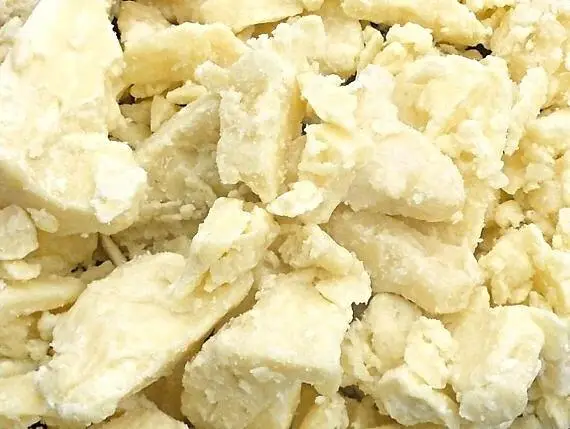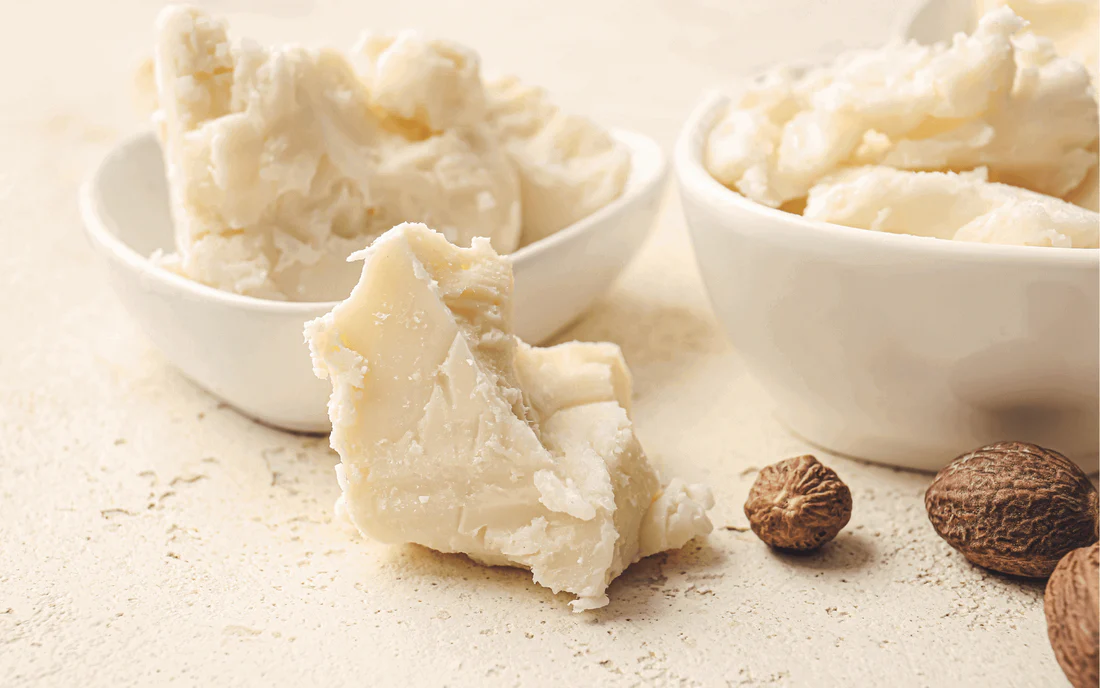Are you on the hunt for high-quality pure shea butter, but unsure of what color it should be? Find yourself confused by all the different shades and varieties out there? Trust me, I’ve been there too. As a long-time user and advocate for shea butter, I understand the importance of knowing its true characteristics to make sure you’re getting the best product. So let’s dive in together as I break down everything you need to know about the color of pure shea butter.
In this article, we’ll explore why shea butter can come in various colors, how to distinguish between fake and genuine products based on their color, and what factors impact the shade of pure shea butter. By understanding these key points, you’ll have all the tools necessary to confidently choose authentic and effective shea butter for your skin care needs. So join me as we unravel the mystery behind what color truly represents quality in pure shea butter.
So, What color is pure shea butter?
The color of pure shea butter can vary depending on its source and processing methods. Generally, it is a light beige or off-white color, but it can also have hints of yellow or green.
The quality of shea butter is not determined by its color alone; other factors such as scent and texture are also important indicators. High-quality shea butter should have a mild, nutty aroma and a smooth, creamy texture that melts easily when applied to the skin.
To ensure you are getting pure, high-quality shea butter, look for products that are labeled as “unrefined” or “raw.” These types of shea butter undergo minimal processing and retain more of their natural properties compared to refined versions.
In addition to its color and scent, another way to determine the quality of shea butter is through its origin. Shea trees grow in various regions throughout Africa, with each region producing slightly different variations in terms of smell and consistency. For example, West African shea butter tends to be creamier while East African varieties may have a stronger fragrance.
Ultimately, the best way to understand the quality of your shea butter is by trying it out for yourself. Look for reputable brands that prioritize fair trade practices and sustainability in sourcing their ingredients. By choosing high-quality pure shea butter products, you can reap all the amazing benefits this natural ingredient has to offer for your skin and hair care routine.
Understanding the Natural Color Variations in Pure Shea Butter
When you first lay eyes on pure shea butter, its natural color can vary quite a bit. You might spot shades ranging from creamy off-white to a soft yellow or even light brown. This beautiful array is influenced by several factors, including the type of shea tree it comes from and how it’s processed. For example, traditional methods that involve minimal refining tend to keep more of the butter’s natural pigments, resulting in a richer hue. On the other hand, heavily refined shea butter may appear pale or white because many of those vibrant colors are stripped away during production.
The difference in color isn’t just about looks; it also reveals something about its quality and composition. Unrefined shea butter retains more nutrients like vitamins A and E along with essential fatty acids that provide our skin with moisture and nourishment. When choosing your shea butter for skincare use or hair care routines, pay close attention to this color variance as it can impact effectiveness. So next time you come across different shades of shea butter at your local market or online store—be curious! Each unique shade tells a story about where it has been sourced and how much love went into bringing this precious product from nature right to our homes.

Decoding Fake and Genuine Shea Butter Based on Their Color
When it comes to shea butter, the color can tell you a lot about its quality and authenticity. Genuine shea butter typically ranges from a creamy ivory to a pale yellow hue. This natural shade indicates that it’s been minimally processed, retaining all its nourishing properties. If you come across very bright or unnatural colors—like deep yellow or even green—it could be a sign of additives or chemical processing. These hues might seem appealing at first glance, but they often mean the product has lost much of its original goodness.
Another important aspect is the texture and consistency alongside color. Authentic shea butter feels smooth and buttery when rubbed between your fingers, while imitation products may feel grainy or waxy due to fillers. To further ensure you’re getting genuine shea butter, consider checking for an earthy scent; real shea has a nutty aroma that’s soothing and fresh. You can also do a simple test: place some in cold water; pure shea butter will gradually melt away while fake versions may just float around as clumps! By paying attention to these details—the right color, texture, and scent—you can confidently choose high-quality shea butter that truly benefits your skin.
Read also: essential oils for collagen production
Factors that Impact the Shade of Pure Shea Butter
When it comes to pure shea butter, its shade can vary quite a bit, influenced by several key factors. First and foremost is the method of extraction. Traditionally, shea butter comes from the nuts of the African shea tree. If the nuts are processed using a more natural approach—like sun-drying followed by cold pressing—the resulting butter tends to be lighter in color. In contrast, if heat or chemicals are involved in extraction, you might end up with a darker product that’s often richer in scent but may have less nutritional value.
Another significant factor affecting shear butter’s shade is its origin. Shea trees grow primarily in West Africa; however, different regions produce slightly different types of shea nuts due to variations in soil and climate conditions. For instance, nuts harvested from areas with more rainfall tend to yield lighter-colored butter compared to those gathered from drier regions where conditions stress the tree somewhat more. Additionally, the freshness of the shea nut itself plays an important role; older or rancid nuts can create a darker hue reflecting their degraded state rather than their original vibrancy.
Ultimately, understanding these elements can help you choose high-quality pure shea butter tailored for your specific needs!
Choosing Quality Shea Butter with Confidence
When it comes to selecting the best shea butter, having a keen eye for quality is essential. The first step in this journey is recognizing that not all shea butter is created equal. Look for products labeled as “raw” or “unrefined,” which means they retain their natural nutrients and healing properties. Authentic shea butter has a creamy texture and earthy aroma, often varying in color from ivory to light yellow. This variety can give you hints about its origin; for example, high-quality shea butter typically comes from West Africa, where local artisans meticulously process it by hand.
It’s also important to examine the packaging carefully before making your purchase. Trustworthy brands will provide information about sourcing practices and ingredient transparency—this builds confidence in what you’re buying. You might want to consider these factors:
- Is the product ethically sourced?
- Are there any additives or synthetic ingredients listed?
- What do customer reviews say about its effectiveness?
By taking these steps, you’re not just choosing a product; you’re supporting sustainable practices while ensuring that your skin receives only the finest nourishment nature has to offer!
